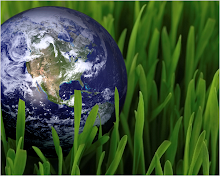 According to the National Snow and Ice Data Center, global warming has continued to melt the icy region in Antarctica. The North Pole is becoming a part of the planet with less ice and more water. The NSIDC tracks the arctic region and reports daily on their site, showing detailed charts and keeping updated data on the effects of global warming.
According to the National Snow and Ice Data Center, global warming has continued to melt the icy region in Antarctica. The North Pole is becoming a part of the planet with less ice and more water. The NSIDC tracks the arctic region and reports daily on their site, showing detailed charts and keeping updated data on the effects of global warming.Arctic Sea Ice News & Analysis: Warm winds slow autumn ice growth
Sea ice extent grew throughout October, as the temperature dropped and darkness returned to the Arctic. However, a period of relatively slow ice growth early in the month kept the average ice extent low—October 2009 had the second-lowest ice extent for the month over the 1979 to 2009 period.
Figure 1. Arctic sea ice extent for October 2009 was 7.50 million square kilometers (2.90 million square miles). The magenta line shows the 1979 to 2000 median extent for that month. The black cross indicates the geographic North Pole.
Sea ice extent grew throughout October, as the temperature dropped and darkness returned to the Arctic. However, a period of relatively slow ice growth early in the month kept the average ice extent low—October 2009 had the second-lowest ice extent for the month over the 1979 to 2009 period.
Figure 1. Arctic sea ice extent for October 2009 was 7.50 million square kilometers (2.90 million square miles). The magenta line shows the 1979 to 2000 median extent for that month. The black cross indicates the geographic North Pole.
NSIDC.ORG


No comments:
Post a Comment